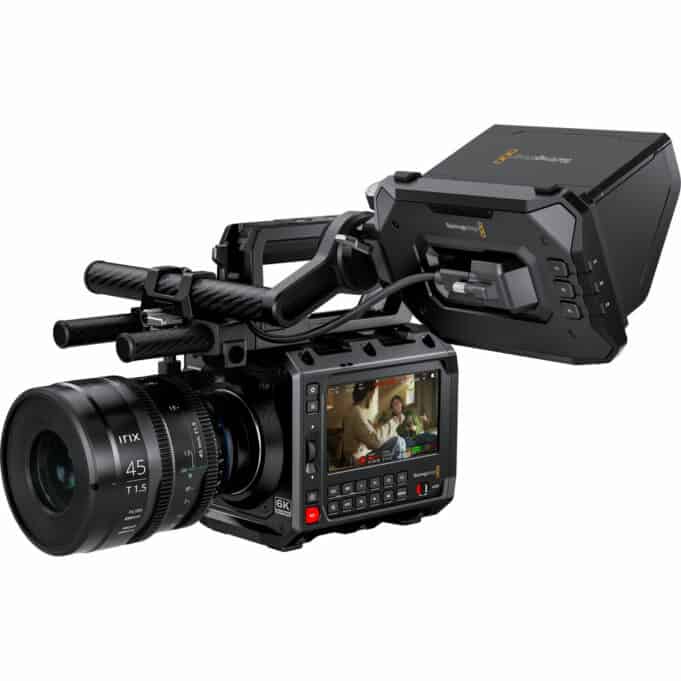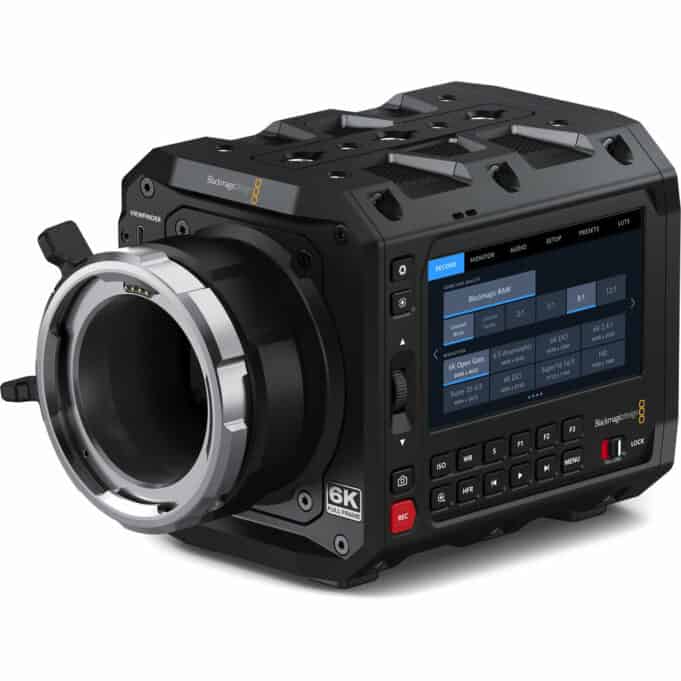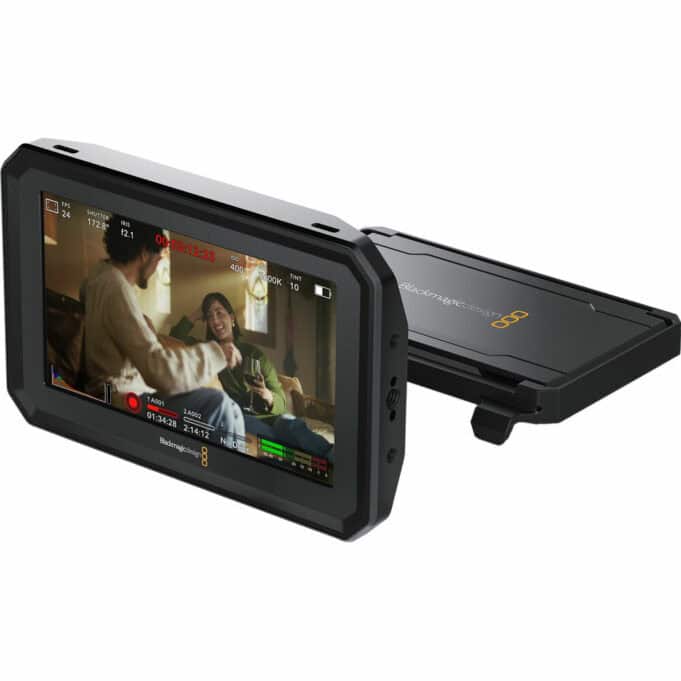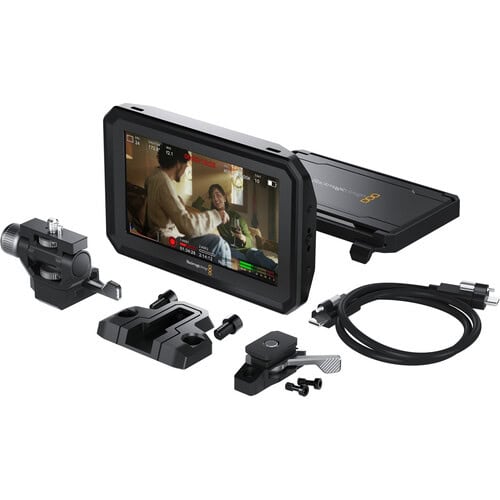The price was right. The box style design was right. And the 6K sensor was right.
But that built-in monitor on the left side without a hinge or any sort of articulation? That most certainly didn’t feel right.
Which is why the new purpose-built monitor Blackmagic Design recently announced for the upcoming PYXIS 6K cinema camera makes a lot of sense. It solves a problem before the product even begins shipping.
With a 5″ HDR touchscreen and various mounting points, the new monitor now makes it easier for operators to see what’s going — to essentially use the camera like any of its competition such as the Sony FX6 and Canon C80. With the fixed screen on the left as originally announced, you really couldn’t use that display as a monitor. Instead it would presumably be used to manage settings on the camera. Or, in the case of larger productions, it could be used by an assistant operator. Then again, the PYXIS is really targeted at solo content creators, wedding operators, and smaller productions where such luxuries of an assistant would be not possible.
Blackmagic PYXIS Monitor
Blackmagic has pried the PYXIS monitor at a very reasonable $295 USD.
Blackmagic PYXIS Monitor
Key features include:
- 5″ HDR Touchscreen Monitor
- 1500 cd/m² Brightness, HDR Support
- Multiple 1/4″-20 & M4 Mounting Points
- 1920 x 1080 Native Resolution
- Three Assignable Function Buttons
- Clip-On Sunshade Included
- Large Tally Light on the Front
- Complete Camera and Menu Control
- MSRP: $295 USD
Note: above photo shows the PYXIS monitor with optional accessories
With 1500 nits it should be a decent performer in bright outdoor conditions which is a nice bonus.
A really neat touch, though, is the USB cable used to connect the monitor to the PYXIS camera. It does double duty, carrying both a power and a video signal without the hassle of running two cables — and maybe even triple duty if you consider it can also control the camera. That’s a really sweet convenience! Also, with this setup you don’t need to worry about bulky batteries hanging off the back of the monitor causing the arm to swing all over the place, and other issues associated with additional weight. You simply use one battery in the PYXIS to power both the camera and the monitor.
I should point out that the $295 USD base price for the monitor does not include any mounts. For that you’d need to step up to one of the bundled kits Blackmagic is offering:
- Blackmagic Design PYXIS Monitor Kit $445
- Blackmagic Design PYXIS Monitor EVF Kit $645
Both those kits include a variety of mounting points that should provide a satisfactory solution for most shooters. The dovetail design is particularly appealing. Plus it’s based on tension so you can easily adjust to allow for panning it as needed.
You can watch the video below for an overview of the new monitor from Blackmagic Design CEO Grant Petty.
WATCH: Introducing Blackmagic PYXIS Monitor
The PYXIS 6K has yet to ship and has faced several delays. I wonder if this monitor had something to do with that? Most of the competition include a monitor with mount. However, none are as inexpensive as the Blackmagic. Priced at just $2,995 USD with the L or EF mount (PL is $200 more) it’s, as we’ve come to expect from the Australian innovators, a screaming bargain. And, don’t forget: you get a free license for DaVinci Resolve as well, so you’re all set for video editing and color grading out-of-the-box. In this respect, Blackmagic is hard to beat when it comes to price-performance.
Don’t Forget About Super 16!

And for us vintage fanatics it’s nice to see Blackmagic provide a Super 16 mode (there’s also a Super 35 mode should you want to use none full-frame glass).
In any case it will be interesting to see how the reviews shape up for the PYXIS. For about $3,500 or so, including the new monitor, there’s a lot to like here. Many will lament the lack of ND filters. But that’s typical for pure play cinema cameras, just like we find (or don’t!) on the more expensive RED/Nikon Komodo-X.
When the Blackmagic PYXIS 6K starts shipping (there’s no date posted on B&H) it could be one of the biggest events in the world of indie cine cameras for 2024. Yes, many are using iPhones and Androids to shoot YouTube videos. But there’s always going to be a space — even if an ever decreasing niche — for purpose-built cinema cameras with interchangeable lenses and high performance sensors that address specific production needs.




